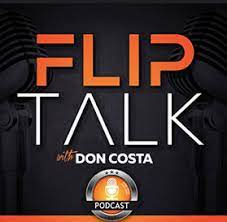|
Check out our new audio content!
Getting your Trinity Audio player ready...
|
Image from Pixabay
By Rick Tobin
Historically, rising inflation trends have benefited real estate better than almost any other asset class because property values are usually an exceptional hedge against inflation. This is partly due to the fact that annual home prices tend to rise in value at least as high as the annual published Consumer Price Index (CPI) numbers.
However, inflation rates that are much higher than more typical annual inflation rates near 2% to 3% can cause concern for the financial markets and Federal Reserve. As we’re seeing now, the Fed plans to keep raising interest rates to combat or neutralize inflation rates that are well above historical norms.
ADVERTISEMENT
The true inflation rates in 2022 are at or above the published inflation rates back in 1981 when the Fed pushed the US Prime Rate up to 21.5% for the most creditworthy borrowers and the average 30-year fixed mortgage rate was in the 16% and 17% rate range. Back in the late 1970s and early 1980s, rising energy costs were the root cause of inflation just like $5 to $7+ gasoline prices per gallon in 2022.
All-Time Record High Tappable Equity

Image from Pixabay
In the first quarter of 2022, the collective amount of equity money that homeowners with mortgages on their properties could pull out of their homes while still retaining at least 20% equity rose by a staggering $1.2 trillion, according to Black Knight, a mortgage software and analytics company.
Mortgage holders’ tappable equity was up 34% in just one year between April 2021 and April 2022, which was a whopping $2.8 trillion in new equity gains.
Nationally, the tappable equity that homeowners could access for cash reached a record high amount of $11 trillion. By comparison, this $11 trillion dollar amount was two times as large as the previous peak high back in 2006 shortly before the last major housing market bubble burst that became more readily apparent in late 2007 and 2008.
This amount of tappable equity for property owners reached an average amount of $207,000 in tappable equity per homeowner. If and when mortgage rates increase to an average closer to 7% or 8% plus in the near future, then home values may start declining and the tappable equity amounts available to homeowners for cash-out mortgages or reverse mortgages will decline as well.
All-Time Record High Consumer Debts
The March 2022 consumer credit report issued by the Federal Reserve reached a record high $52.435 billion dollars for monthly consumer debt spending. This $52 billion plus number was more than double the expected $25 billion dollar spending amount expectation and the biggest surge in revolving credit on record. In April 2022, the consumer spending numbers surpassed $38 billion, which was the #2 all-time monthly high.

Image from Pixabay
For just credit card spending alone, March 2022 were the highest credit card spending numbers ever at $25.6 billion. The following month in April, credit card debt figures exceeded $17.8 billion, which was the 2nd highest credit card charge month in US history.
While many people are complaining about mortgage rates reaching 5% and 6% in the first half of 2022, these rates are still relatively cheap when compared with 25% to 35% credit card rates and mortgage rates from past decades that had 30-year fixed rate averages as follows:
● 1980s: 12.7% average 30-year fixed mortgage rates
● 1990s: 8.12%
● 2000s: 6.29%
In the 2nd half of 2022, it’s more likely that many borrowers will fondly look back at 5% and 6% fixed rates as “relatively cheap” if the Federal Reserve does follow through with their threats to increase rates upwards of 10 times over the next year in order to “contain inflation” while punishing consumers at the same time who struggle with record consumer debt (mortgages, student loans, credit cards, automobile loans, etc.).
Financially Insolvent Government Entitlement Programs
There are published reports by the Trustees of both Social Security and Medicare about how the two programs are potentially on pace towards financial insolvency in the not-too-distant future. The Social Security Trustees claim that their retirement program may not be able to fully guarantee all benefits as soon as 13 years from now in 2035. Over the next decade, Social Security is calculated based upon current income and expense numbers to run budget deficits of almost $2.5 trillion dollars.
ADVERTISEMENT
As per the Trustee’s published report linked below, it’s claimed that the Social Security Disability Insurance (SSDI) trust fund may deplete its reserves as early as 2034.
Social Security report link: https://www.ssa.gov/OACT/TR/2022/tr2022.pdf
If and when the Social Security trust fund starts operating with cash-flow deficits, all beneficiaries, or Americans who receive the Social Security benefits, may be faced with an across-the-board benefits cut of 20% as suggested by the Trustees. For many Americans who struggle to get by on 100% of their Social Security benefits, the threat of a possible future reduction in amounts of 20% or more can be quite scary to think about.
The average Social Security benefit paid out nationwide in 2022 is estimated to be $1,657 per month or $19,884 per year. A 20% reduction in monthly benefits without using future inflation adjustments would be equivalent to a reduction of $331.40 per month in benefits and a new lower monthly payment amount of $1,325.60.
The Medicare Hospital Insurance (HI) trust fund is also on track to exhaust its cash reserves over the next six years by 2028, as predicted by the Medicare Trustees in their own gloomy report that’s linked here: https://www.cms.gov/files/document/2022-medicare-trustees-report.pdf
Let Your Money Work For You

Image from Pixabay
As noted in my past published articles, the bulk of a homeowner family’s overall net worth comes from the equity in their primary residence. The average US homeowner at retirement age has approximately 83% of their overall net worth tied up in the equity in their home and pays monthly expenses from just the remaining 17% of overall net worth that is held in checking, savings, or pension accounts.
While inflation usually is beneficial to pushing up real estate values at a rapid annual pace, inflation is also devastating to the value of the dollar in your pocket as purchasing powers decline. Inflation for real estate does have a ceiling level at which it becomes detrimental to housing values if the Fed starts doubling or tripling mortgage rates to slow down the inflation rates.
Equity in properties isn’t so easy to access to buy food, gas, clothing, or to pay your utilities as having cash on hand. If and when future government entitlement benefits decrease and inheritance and property taxes may increase, then being self-sufficient while earning monthly income from tenants in your rental properties or by pulling cash out of your properties near peak highs may go a long way towards allowing you to maintain the same standard of living that you’ve been accustomed to over the years.

Rick Tobin
Rick Tobin has a diversified background in both the real estate and securities fields for the past 30+ years. He has held seven (7) different real estate and securities brokerage licenses to date, and is a graduate of the University of Southern California. Rick has an extensive background in the financing of residential and commercial properties around the U.S with debt, equity, and mezzanine money. His funding sources have included banks, life insurance companies, REITs (Real Estate Investment Trusts), equity funds, and foreign money sources. You can visit Rick Tobin at RealLoans.com for more details.
Learn live and in real-time with Realty411. Be sure to register for our next virtual and in-person events. For all the details, please visit Realty411.com or our Eventbrite landing page, CLICK HERE.




















